I'm not sure if it was the pandemic, or having a child, but everything I do these days is last minute. I don't really like making commitments or plans for anything – doctors, dinners, trips – and instead my friends will get regular texts asking if they want to meet within the next hour or two. I used to not be this way – I reveled in making reservations for fancy dinners weeks in advance (sometimes months) and was proud of being the travel organizer at the shop and at home. No more are these days.
Planning my last trip to Japan had even been haphazard, as I had a very last-minute revelation to reroute my entire trip to spend some time in Fukuoka before making my way to Tokyo and Shiga. I was going all the way to Japan, I thought, mere weeks leading up to my trip, I needed to make as many visits as possible! I'm grateful for the newfound flexibility in policies post-covid, as airlines and hotels now often offer free changes and cancellations. This brave new world is perfect for this commitment-phobe.
My main motivation for visiting Fukuoka was to make my way to the small town of Chikugo, where Nishiyoshida Shuzo is located. I had been wanting to meet Director Kyoko Yoshida for some time, ever since I interviewed her for Shochu Gumi's Female Frontrunners month in 2022. Kyoko-san was always very gracious and down-to-earth and I wanted to meet her in person. Plus I had a hunch she was hilarious.
So somehow, I made it happen by flying directly to Fukuoka from SFO for a short two day stay, all for the same price as my ticket to Tokyo! I boarded the Kyushu Shinkansen in Fukuoka City early in the morning and made it to Chikugo in an hour where Kyoko-san picked me up. Shockingly, I realized that I had been there many years prior when Yoko and I had traveled Kyushu with Anders Arhoj and my husband Johnny! The familiarity of my surroundings told me I was right to change my trip around to make this stop.

Hooray! Me and Kyoko-san in front of the Nishiyoshida factory
Nishiyoshida Shuzo was founded in 1893 as a kasutori shochu producer. Chikugo is a robust sake brewing region and they used the kasu (sake lees) from their neighbors to distill and make kasutori shochu. Today they mainly make barley shochu, with many different brands and expressions that greatly vary in flavor profile. The kanban (banner) in front of their factory proudly displayed that this was the home of their most popular shochu Tsukushi.


Tsukushi is also written on their aging tanks, that can be seen from the road.

Bags of local barley were stored in the warehouse. They also use barley from Australia and every isshobin (1.8L bottle) of their shochu uses 1kg of barley.


As soon as I walked into the factory, I was enchanted. It felt like I was on the set of Bladerunner, it had a super sci-fi feel to it. I am accustomed to sake breweries and learned here that shochu distilleries have its own distinct feel. Everything here moved up and the ceilings were so high, and the machines so loud! It was all so majestic.

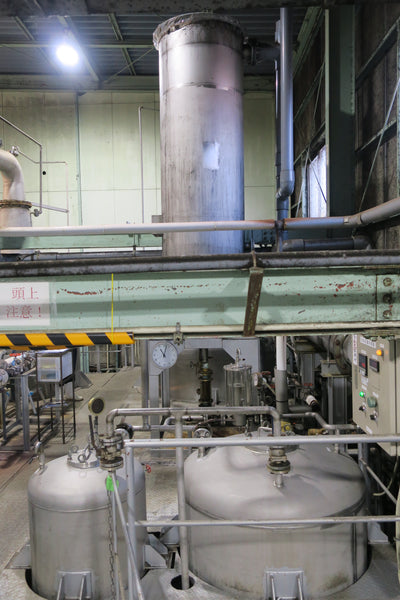
The most impressive piece of equipment I saw here was their barley soaker. This thing turns very slowly so the barley soaks uniformly. For every 1.5 tons of barley, they use 300 liters of water. They ultimately want the barley to soak in 30-35% of moisture, so it is easier to steam.
 Managing Director Takafumi Yoshida pointing at their homemade barley soaking apparatus
Managing Director Takafumi Yoshida pointing at their homemade barley soaking apparatus


Top down view of barley soaker

Soaked barley coming out!


 Barley steamer
Barley steamer
 Tanks of fermenting moromi (mash)
Tanks of fermenting moromi (mash)
The moromi looked and smelled like a banana shake!
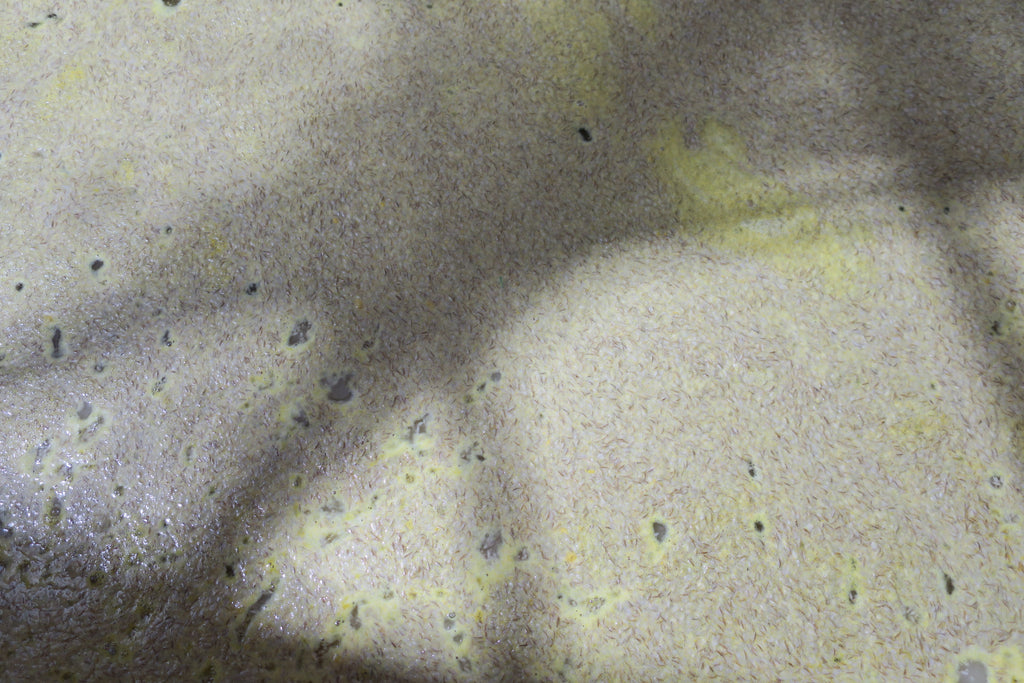
This is black koji!

This machine was amazing and I wish I took more photos of it. Basically, it's hooked up to the barley steamer by a big hose and while the barley is being pumped out, the koji gets sprinkled onto each grain. Then, the pump shoots up to the koji-resting area.


After about 20-40 hours (depending on the method used for koji making), the barley has turned into koji.

The stills! They have both pot still and vacuum stills on site.




This here measures ABV.

The lab!
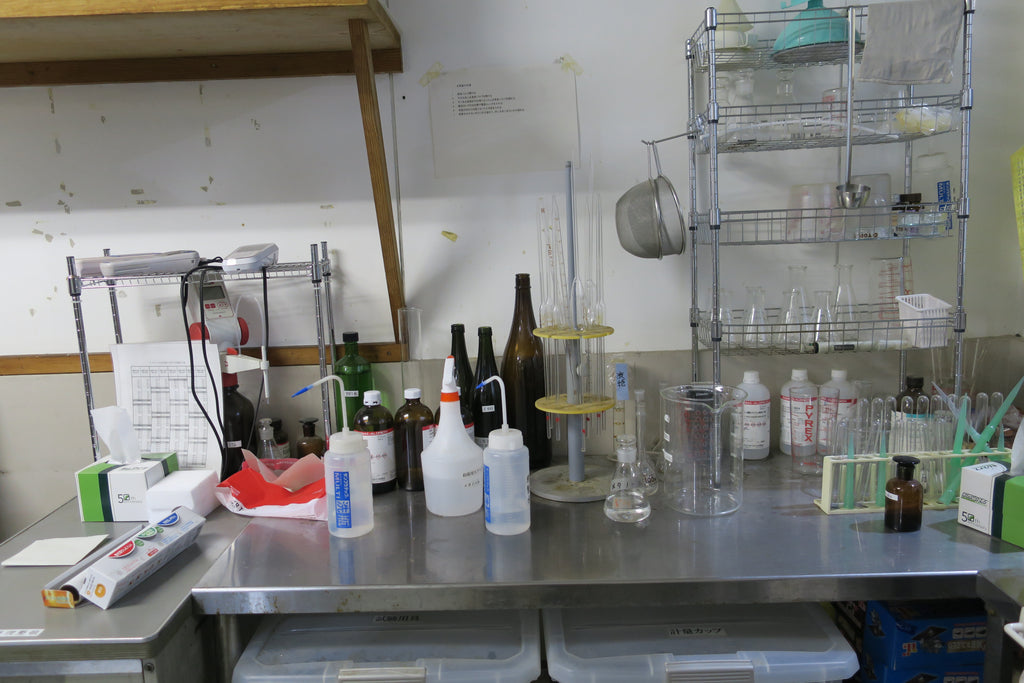

The aging tanks upon tanks.



Here was a lone barrel with a shochu aging inside.

Nishiyoshida has a little storefront where they showcase and sell all of their available bottles.

Their shochus get a lot of acclaim both in Japan and internationally, recently winning the San Francisco World Spirits Competition for Kintaro - a super smoky barley shochu.

We love Nishiyoshida's shochus which showcase the range of barley, from refined to funk. Jakuunbaku, their unfiltered shochu has been featured in Shochu Gumi, and I'm proud to have recently brought in their Tsukushi Zenkoji, a chocolately shochu made with 100% barley shochu.

Each of their shochus bottled the way they used to back in the day, in ceramic jars
Nishiyoshida Shuzo is a family affair: the eldest brother Motohiko Yoshida is President, sister Kyoko-san is Director, and youngest brother Takafumi is Managing Director. Kyoko-san is in charge of marketing and travels the world promoting the company's shochus and Takafumi is in charge of production. They do not have a formal toji (head distiller) and instead collaborate and make decisions on new bottlings together. I am in awe that somehow they can work together as siblings and run a successful company together day in, day out – something that seems an impossible feat (as an older sister).
 Kyoko-san and Masafumi-san in front of their company.
Kyoko-san and Masafumi-san in front of their company.
Thank you to the Yoshida family for spending the day with me, giving me a full tour and tasting me through all your incredible spirits. I left inspired and proud to introduce your shochus to our stateside customers and look forward to partnerships in the future!


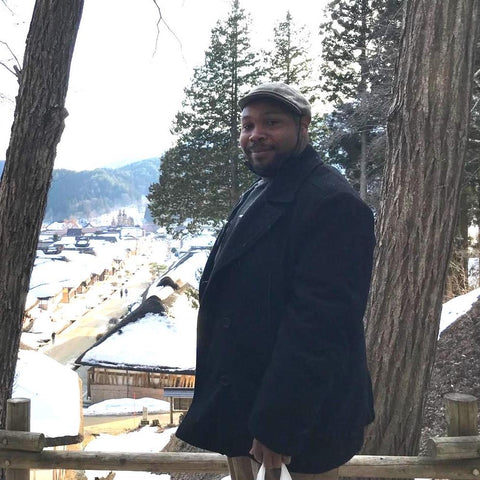
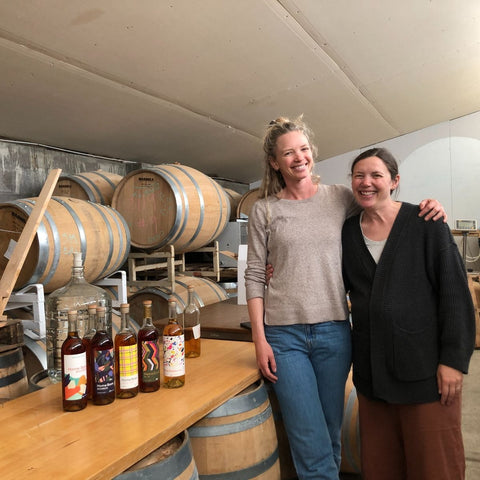

Comments (0)
There are no comments for this article. Be the first one to leave a message!